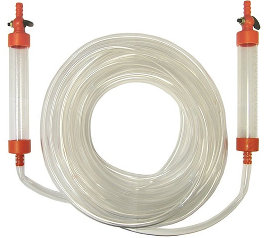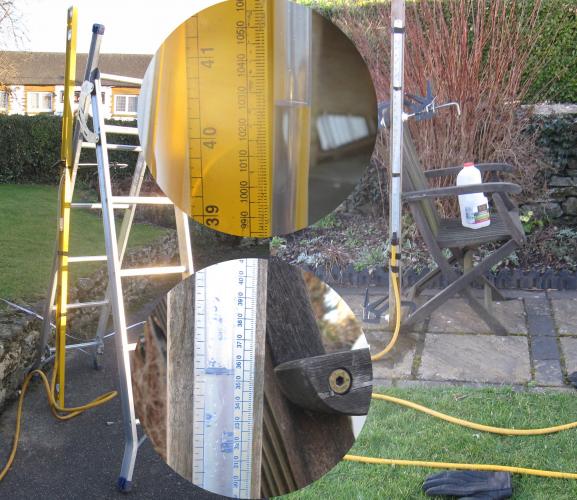Fun Surveying Site Levels
One of my preconditions it to provide an accurate survey of site levels across my site. The last time that I did anything like this was just under 40 years ago as a young Lt. in the Royal Engineers when I was surveying for a road, but that was using a decent theodolite to do cut and full calcs. Nowadays you typically lasers and GPS, but I didn't want to pay a fortune for something that I could do myself, so I reverted to a variant of a technique that the Romans used and that is to use a water level. You can buy them off-the-shelf (e.g. this Handyman Faithfull Water Level 10m/33ft which looks like the first image). However, I decided to hack together my own using a couple of 18" lengths of transparent tube, a garden hose and a couple of steel rulers and black masking tape as per the second.


Basically the technique is to leave the chair at a reference datum level and move the ladder around the site. The bottle of water on the chair is to top up the water if any is slopped out. Occasionally, I had to shift the position of the readout tube up/down on the moveable measure (to keep the water column in the transparent section). I just entered both readings in a spreadsheet with reading 1 being the moveable readout at the datum. (This is in row 2, because the headings are in row 1.) So the height formula is just (and copied from row 2 to the rest of the rows):
=(C$2-B$2)-(C2-B2)
Since my garden hose is about 40m long, I was able to cover my entire site from a single datum, and even where I didn't have line-of-sight. As you can see from the inserts, it is really easy to read out the levels to 1mm accuracy, so even if I was sloppy the entries in this spreadsheet are at most a couple of mm out for the entire site.
The one thing that you do have to be careful about is to flush the full length of the hose through before you start to remove any bubbles / airlocks and more importantly to ensure that you don't have one end of the hose at (overnight) air temperature and the other at mains water temperature, as this density gradient can cause a systematic error of a few mm.
-
 1
1


1 Comment
Recommended Comments
Create an account or sign in to comment
You need to be a member in order to leave a comment
Create an account
Sign up for a new account in our community. It's easy!
Register a new accountSign in
Already have an account? Sign in here.
Sign In Now